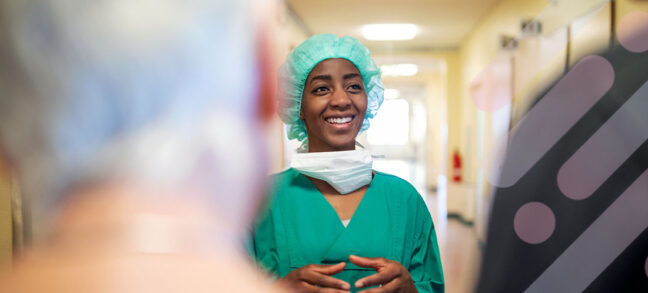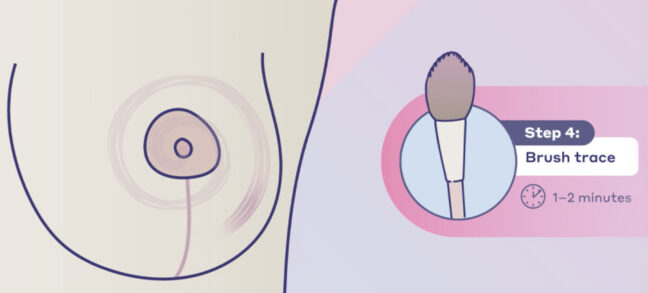Some women view mastectomy as a “final” step in their breast cancer treatment. But if you choose to have breast reconstruction surgery, there are different things to consider when it comes to your recovery. Nerve regeneration takes time, which is why we’ve gathered some key facts to help you manage expectations and avoid surprises.
what causes breast numbness after mastectomy?
Having a mastectomy can help increase breast cancer survival rates, but it’s important to consider the side effects as part of your overall care plan. Breast numbness is a common side effect that occurs when nerves in the chest are cut as breast tissue is removed. Once cut, the nerves are unable to carry messages back and forth. The resulting numbness or loss of sensation can impact people’s quality of life, intimacy and body image.1,2
how could resensation® help?
Resensation is a form of nerve repair you may want to consider if you are having a mastectomy and breast reconstruction. Resensation uses allograft nerve tissue to reconnect and bridge the gap between the nerves in your chest and the nerves in your reconstructed breast tissue. Over time, this can lead to regaining sensation in your chest and breasts.
how long does it take for sensation to return?
Nerves take time to regenerate, because they grow at a rate of about 1 mm/day.3 It may take several months after your surgery before you notice sensation returning, and the change in sensation can continue to develop for up to two years.4
what does nerve regeneration feel like?
Nerve regeneration can feel a little strange at times, but mild discomfort is good news and can be a sign that your nerve is regenerating and starting to work again. Within the first six to 12 months following surgery, you might notice the following: hot or cold sensitivity, little shocks or zaps, or an aching or tingling feeling.5
references
- https://link.springer.com/article/10.1007/s10549-017-4547-3
- https://www.ncbi.nlm.nih.gov/pubmed/29721811
- Grinsell D, Keating CP. Peripheral nerve reconstruction after injury: a review of clinical and experimental therapies. Biomed Res Int. 2014;2014:698256. doi:10.1155/2014/698256
- https://insights.ovid.com/pubmed?pmid=11994590
- Axogen: March 2020. Data on file. inReport Axogen 242 Sural Harvest v2.0.
Resensation Articles

How does mastectomy impact the nerves in the breast?
One sometimes overlooked aspect of mastectomy is its impact on nerves. Read what happens to nerves during mastectomy and explore…
Read More
What happens during implant breast reconstruction with Resensation®?
By repairing sensory nerves, Resensation® enables you to potentially regain sensation to your chest. Read how this procedure works during…
Read More
how resensation® helped Leanna feel secure in her family’s future
With Resensation®, Leanna can be there to watch her kids grow up—without losing the feeling of being whole.
Read More
post-surgery sensory retraining: instructions and video guide
Sensory retraining is a series of exercises designed to help you reconnect with your body after breast reconstruction with Resensation®.
Read More